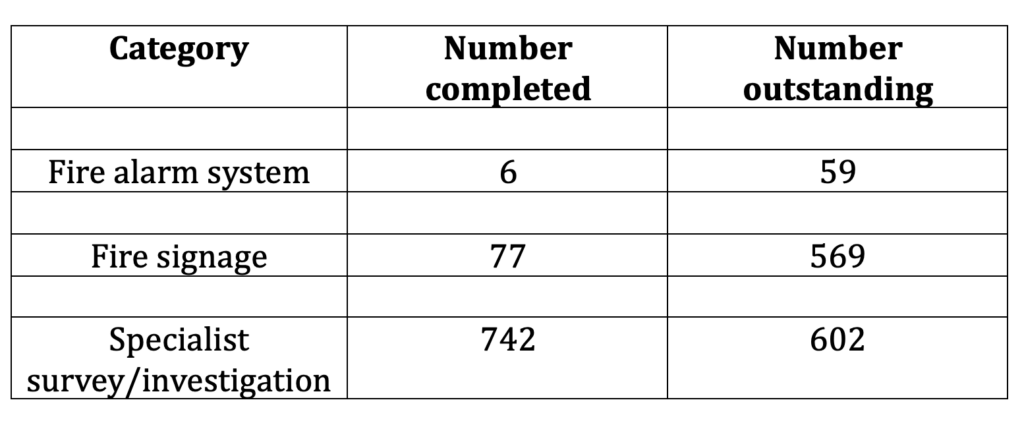More on LBWF’s failure to keep tenants in its low-rise and high-rise housing blocks safe from fire
A few weeks ago, and in response to a Freedom of Information Act question, LBWF released further data about the remediation programme it is running to address the fire safety defects which exist in all but one of its 63 low-rise and high-rise housing blocks.
Unsurprisingly, given that this programme started in 2020, the data shows that in the years that have elapsed there has been some tangible progress.
But what’s striking is how much more needs to be done, even as regards the most pressing issues.
To start with the headline figures, while the number of ‘high’ or ‘medium’ risk defects that are classified as ‘overdue’ has gradually fallen from a peak of 4,431 in January 2020, the comparative figure at present is still 1,960, suggesting that, at the current rate, remediation work will have to continue for at least another four years.
Looking at the detail also makes for grim reading. The table below illustrates the state of play with some key fire safety categories:
Why hasn’t LBWF moved further, faster? After all, it initially promised that ‘Building safety’ was ‘a top priority for the Council’, and claimed to have committed £40m. to getting it right. So, what’s been the problem?
First, it’s important to underline that, perhaps counterintuitively, the number of defects which need to be rectified has grown substantially over time.
And that’s because, in addition to facing up to what the Grenfell tragedy exposed, a nation-wide legacy of building techniques and materials which were once commonly used, but now are judged unsafe, LBWF is also having to make good local defects that date from earlier times, some identified in historic Fire Risk Assessments but then – inexplicably – left to fester, and others long forgotten, but gradually emerging as remediation work has proceeded (see links).
Second, it appears that, perhaps surprisingly, LBWF has been rather less committed to the remediation programme than its initial comments seemed to foretell.
The deliberations of the most relevant Town Hall oversight committees clearly illustrate this change.
In 2021, one year after the remediation programme’s launch, the Audit and Governance Committee twice discussed how it was proceeding, and in particular the number of actions that had been either completed or were outstanding.
This was supposed to be the start of annual monitoring. But, in fact, the subject has never been returned to again.
The minutes of the Housing Scrutiny Committee tell a similar story. It has met 38 times since Grenfell, and discussed fire safety in local high-rise and low-rise blocks on five separate occasions.
But the last of these occasions was in October 2022.
The more that emerges about the remediation programme, therefore, the worse LBWF looks.
Its promise to rectify fire safety issues has stalled, leaving almost all council tenants at risk, and that is a failure which many will judge as unconscionable.

